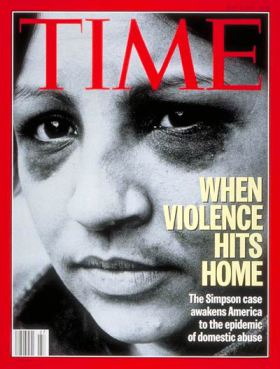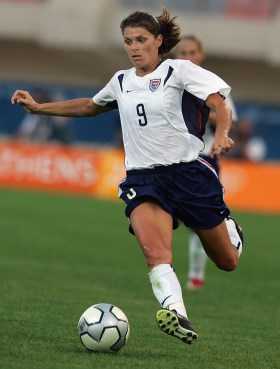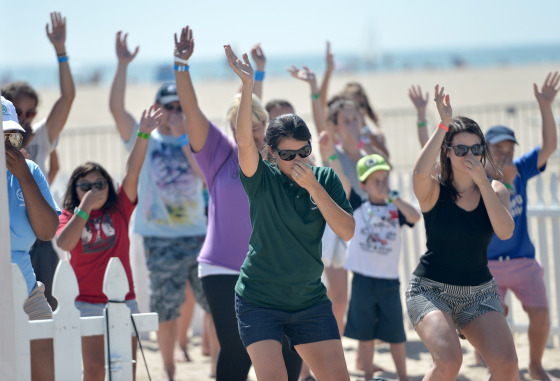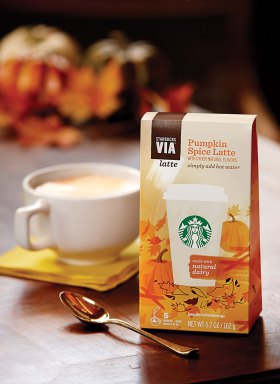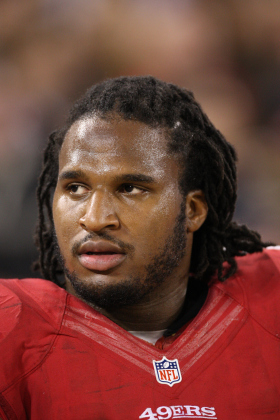
Broadcaster Ted Robinson made a faux pas about Janay Rice. Defensive tackle Ray McDonald got arrested for beating up his girlfriend. Guess which one got a two-game suspension?
In the wake of the PR disaster caused by the Ray Rice scandal, NFL teams are thrashing around for ways to prove they take domestic violence seriously. They’ll throw anyone under the bus–as long as he’s not a valuable asset on the field.
San Francisco 49ers broadcaster Ted Robinson was suspended for two games this week after he suggested on KNBR radio Monday that Janay Rice, who was knocked out by then-boyfriend Ray Rice in a much-discussed elevator dispute, was “pathetic” for going on to marry Rice after he hit her.
Meanwhile, defensive lineman Ray McDonald was arrested Aug 31st for felony domestic violence, but 49ers CEO Jed York said he will continue to play until “an entire legal police investigation shows us something.” Probably has nothing to do with the fact that McDonald is a starter who made three tackles that helped the 49ers win 28-17 against Dallas on Sunday, right?
Robinson, who made “insensitive” comments but has never been publicly accused of physical violence, will sit out for two games. McDonald, who was arrested on domestic violence charges after police were called to his home and found his fiancée with “visible injuries,” is scheduled to play this Sunday.
Welcome to the wonderful world of the NFL.
Perhaps the 49ers thought they were sacrificing Robinson to appease hordes of furious women. “The comments made by radio broadcaster Ted Robinson on Monday were offensive and in no way reflect the views of the San Francisco 49ers organization,” said 49ers president Paraag Marathe in a statement announcing that the team had suspended their broadcaster. “Our organization stands strongly against domestic violence and will not tolerate comments such as these.”
Translation: “We are SHOCKED at the OFFENSIVE LANGUAGE used here! We have NO tolerance for anybody who doesn’t make us millions of dollars doing ANYTHING that makes us look bad! Plus, we totally respect women. (Pay no attention to that player behind the curtain. Or to his bruised, pregnant fiancée.)”
To be fair, Robinson probably shouldn’t have said what he said. Although no tape exists online, Robinson allegedly questioned why Janay Rice did not leave after the abusive incident, and called her “pathetic” for marrying her abuser, according to the San Francisco Chronicle. It’s not a very nice thing to say, but it’s not the worst thing that’s been said about this incident; a guest on Fox News even advised women to avoid getting abused by not hitting their husbands. It’s also important to note that while football players have union protections, broadcasters do not.
But Robinson is small potatoes compared to McDonald, and a verbal faux pas is not the same as allegations of a violent assault. Even former 49ers quarterback Steve Young said that the failure to suspend McDonald made a mockery of the team’s position on domestic violence. “Fundamentally, if the league is going to have a no-tolerance policy for domestic abuse…we’ve got to back it up,” he said on ESPN’s Monday Night Countdown. “Ray McDonald gets arrested and has physical bruising with his wife and felony domestic abuse, violence. Any company in this country, any big company, if that happens, they send you home. They might pay you, but you don’t play, you don’t come to work until we figure this out.”
NFL commissioner Roger Goodell’s newly-strengthened domestic violence policy stipulates a six-game suspension the first time a player is charged with domestic violence or sexual assault, and McDonald has not yet been charged legally. But Goodell’s new policy also says that an act committed against a pregnant woman could warrant a “more serious penalty.” And sixteen female Senators sent Goodell a letter Thursday demanding he take it a step further by implementing a complete zero-tolerance policy. The letter, signed by Senator Barbara Boxer (D-CA) and fifteen colleagues, said “It is long past time for the NFL to institute a real zero-tolerance policy and send a strong message that the league will not tolerate violence against women by its players, who are role models for children across America.” Zero tolerance should mean no excuses, no second chances, no tiptoeing around.
The 49ers refused to comment on the record about the difference between these two cases, but Jed York made it clear in a KNBR interview Tuesday that he has no intention of suspending McDonald until he absolutely has to. “It’s very important that we let due process take its course,” he said. “We want to make sure that everybody is afforded the right that Americans are afforded.”
So by “everybody” he means “players who help my team win” and by “right” he means, “right to play football,” which is apparently written in invisible ink on the very bottom of the Bill of Rights.







